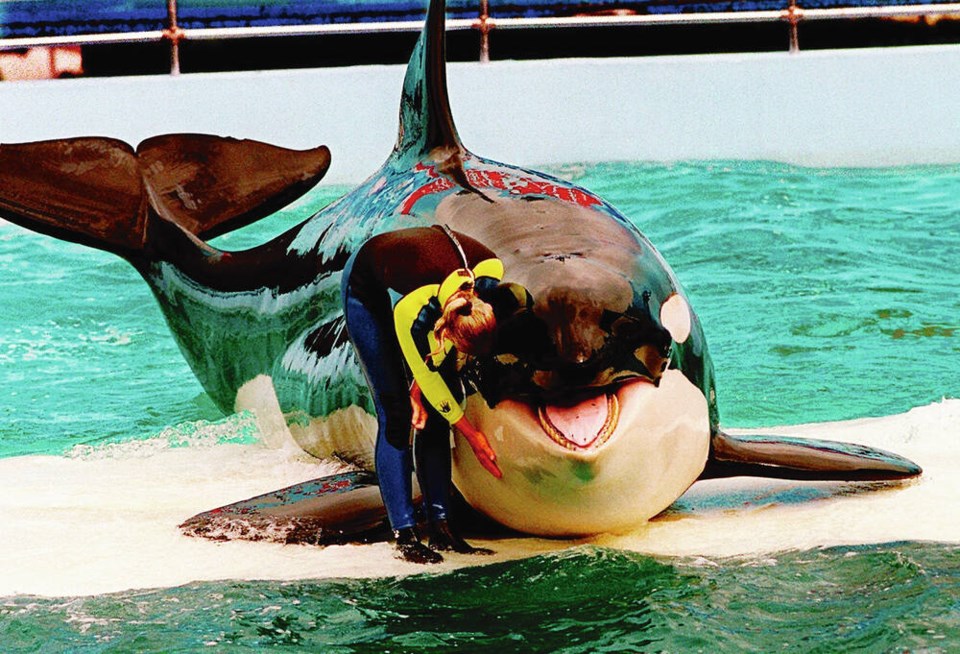Tokitae, a southern resident killer whale that died at the Miami Seaquarium after being held captive for more than a half-century, died of chronic health conditions related to her age, says a necropsy report.
An executive summary of the necropsy lists the cause of death of the 57-year-old whale as “multiple chronic conditions including renal disease and pneumonia,” and says that as animals age, degenerative conditions develop.
The whale suffered from a chronic cardiac disease, lung disease and ongoing inflammation that led to kidney disease, the summary says.
The explanation doesn’t sit well with Howard Garrett, board president of Orca Network in Washington state.
“I don’t think she was old in the sense of having degenerative diseases,” he said. “Her normal lifespan would be far beyond her age at death.”
Garrett said there are several southern resident killer whales estimated to be well into their 60s, 70s and 80s, and one believed to be about 90 years old.
“She was middle-aged. She was very much equivalent to human years, in other words. They have roughly the same lifespan, the same menopause. It’s very similar. And so I think of a late-50s woman — that doesn’t sound like old age to me,” he said.
A 2008 report by the Department of Fisheries and Oceans pegs the average life expectancy of resident killer whales at about 50 years for females but says the maximum longevity is about 80 to 90 years.
Tokitae was one of 100 orcas herded into Penn Cove off Whidbey Island, Washington, 50 kilometres southeast of Victoria, on Aug. 8, 1970. Seven were captured in nets and taken away to marine parks around the world. All were dead by 1987, except one: a female named Tokitae, later given the stage name Lolita at Miami Seaquarium.
Garrett said he’s struggling to understand why the animal died in August, less than a month after a health report by her veterinary team said she was relatively stable.
Members of Tokitae’s veterinary team weighed in on her cause of death in a joint report, writing that pneumonia that had plagued her for months was likely the primary culprit, combined with age-related health changes, such as heart disease and deteriorating kidney function that became evident shortly before she died.
“Our optimism during Toki’s long period of therapy was based on how ill she was when we started and her positive response to treatment during the following months of therapy,” they wrote.
Eric Pittman, director of the Canadian Orca Rescue Society in Victoria, said he wasn’t surprised to hear the cause of Tokitae’s death described as multiple chronic illnesses, “because they worked her to death.”
Pittman has been trying to gain attention for another orca held in captivity, at SeaWorld San Diego, and he hopes that those who fought for Tokitae’s freedom will put their energy into rallying for Corky before the whale suffers the same fate.
Corky, captured in 1969 at four years old near Pender Harbour on the Sunshine Coast, is believed to be the oldest and longest-captive orca.
Pittman’s attempts to launch campaigns for Corky’s release haven’t gained the same traction as those fighting for Tokitae.
“It’s just so easy to forget, to ignore and not deal with. And, you know, it may not matter to anybody else in the world, but it sure matters to Corky,” he said.
>>> To comment on this article, write a letter to the editor: [email protected]




